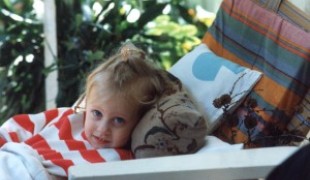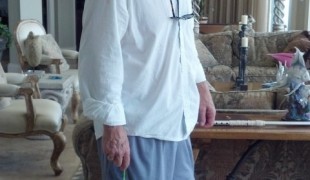- 3655
- 304
- 8
- 8
- 0
- Help Ukraine
About the solution
Abbie Boudreau wondered why her son was always ripping off his socks when he was a baby. Then it hit her! He was trying to play with his toes! This is a type of play that activates and stimulates a child's senses, which is beneficial in several ways for children with autism in sensory activities is beneficial in several ways as it can help with stimulating the brain, creating neural pathways and improving sensory processing systems.
This was the necessary push for Abbie to come up with Sockabu , a sensory-friendly socks that offer the very best traction for kids of all ages!
With an easy ‘flip’ function, Sockabu allows the little ones to cover their toes for warmth and comfort during nap time or uncover them for the best natural traction while learning to walk or when on the go during playtime. An as children enter the crawling and walking stages, the same design that once allowed for easy access to his toes, now provides the very best traction for helping their feet grip the ground during playtime to prevent slipping. These socks are also hand-finished with a supreme cotton blend, designed for the ultimate quality and comfort, and are truly seamless socks which is ideal for children with sensory processing challenges.
Story adapted from https://www.raisingarizonakids.com/2021/09/valley-mom-invents-sensory-fr...
Learn more about this socks here https://sockabu.com/
https://www.youtube.com/watch?v=8-Vxir_MBw0
DISCLAIMER: This story was written by someone who is not the author of the solution, therefore please be advised that, although it was written with the utmost respect for the innovation and the innovator, there can be some incorrect statements. If you find any errors please contact the patient Innovation team via info@patient-innovation.com or at carolina.piedade@patient-innovation.com directly.
This solution shall not include mention to the use of drugs, chemicals or biologicals (including food); invasive devices; offensive, commercial or inherently dangerous content. This solution was not medically validated. Proceed with caution! If you have any doubts, please consult with a health professional.
DISCLAIMER: This story was written by someone who is not the author of the solution, therefore please be advised that, although it was written with the utmost respect for the innovation and the innovator, there can be some incorrect statements. If you find any errors please contact the patient Innovation team via info@patient-innovation.com
-
-
520
-
0
-
8860

Mother invents device to help her daughter regain walking ability
WALKING: Walking
STANDING UP: Standing up from a seated position
BODY BALANCE: Maintaining body balance
Stroke
Hemiplegia
Body-Worn solutions (Clothing, accessories, shoes, sensors...)
Assistive Daily Life Device (to help ADL)
Impaired movement
Difficulties learning how to walk
Restoring mobility
Promoting self-management
Rehabilitating After Stroke
Maintaining Balance and Mobility
Cardiology
Orthopedics
Pediatrics
Physical Medicine and Rehabilitation
Germany
-
-
-
700
-
0
-
10331

Assistive walking device
WALKING: Walking
WALKING WITH A WALKING AID: Walking with a walking aid
BODY BALANCE: Maintaining body balance
Body-Worn solutions (Clothing, accessories, shoes, sensors...)
App (Including when connected with wearable)
Assistive Daily Life Device (to help ADL)
Walking Aid (wheelchair/walker/crutches)
Loss of balance
Frequent falls
Restoring mobility
Regaining sensory function
Managing Neurological Disorders
Recovering from Traumatic Injuries
Maintaining Balance and Mobility
Preventing (Vaccination, Protection, Falls, Research/Mapping)
Neurology
Physical Medicine and Rehabilitation
Mobility issues
Solutions for Disabled people
United States
-
-
-
336
-
0
-
4159

Collaborator Pierluigi Mantovani creates Evolution Devices - solutions that aim to transform Multiple Sclerosis Management
CAREGIVING
BODY BALANCE: Maintaining body balance
STANDING UP: Standing up from a seated position
WALKING: Walking
Multiple Sclerosis
Assistive Daily Life Device (to help ADL)
Walking Aid (wheelchair/walker/crutches)
App (Including when connected with wearable)
AI algorithm
Body-Worn solutions (Clothing, accessories, shoes, sensors...)
Restoring mobility
Regaining sensory function
Managing pain
Promoting self-management
Preserving Organ Function
Managing Neurological Disorders
Maintaining Balance and Mobility
To improve Treatment/Therapy
Preventing (Vaccination, Protection, Falls, Research/Mapping)
Raise awareness
Caregiving Support
General and Family Medicine
Internal Medicine
Medical Genetics
Neurology
Physical Medicine and Rehabilitation
United States
-
 en
en